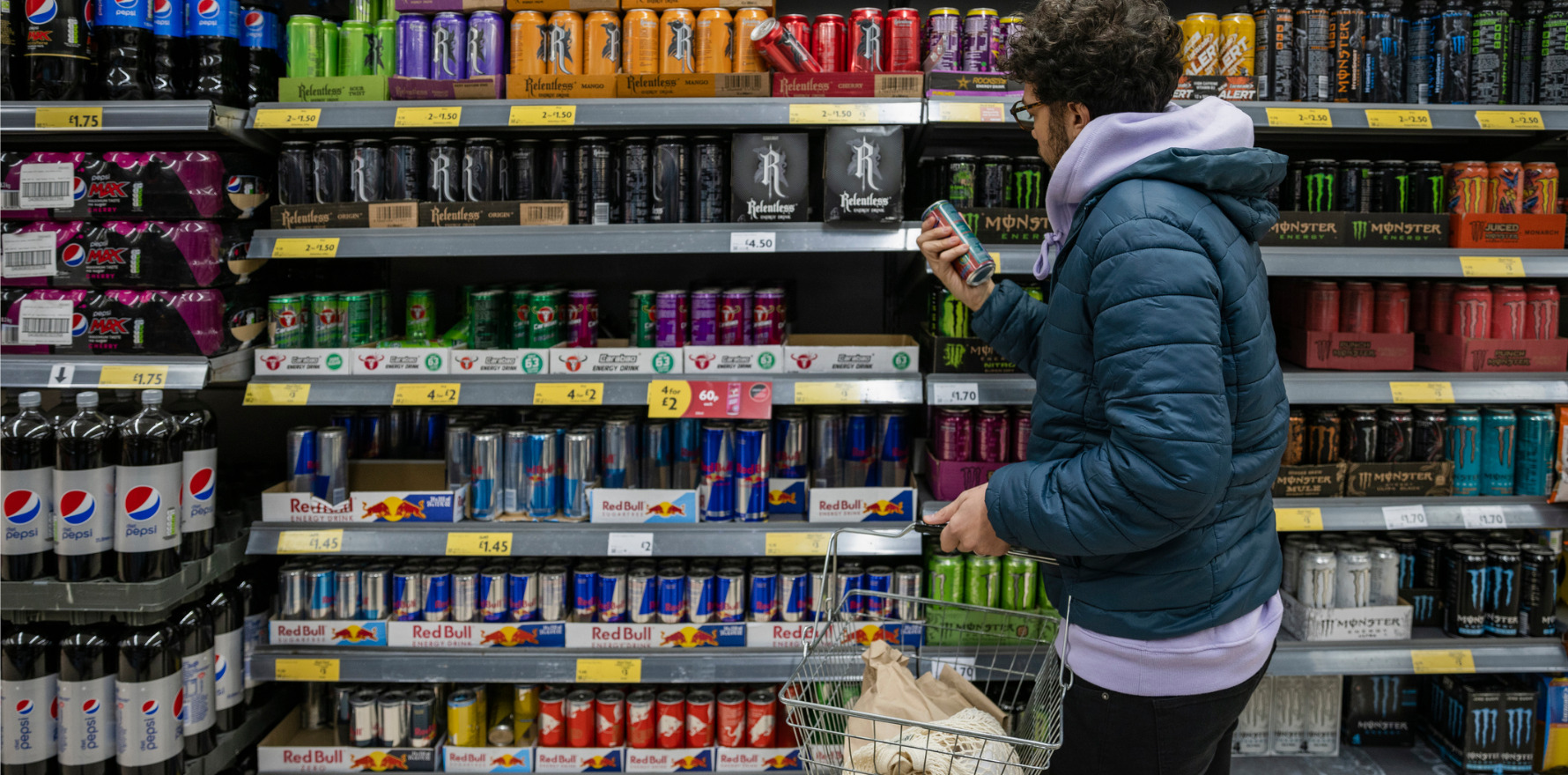As concerns mount about the toxic effects of high levels of vitamin B6 consumption, it may help to know how much is in common drinks.
Energy drinks may be an overlooked source of vitamin B6 to consider amid concerns of rising rates of accidental overdose.
The TGA proposed major changes to the scheduling of B6 supplements that would cut the dose consumers are allowed to buy over-the-counter.
The move comes in response to concerns consumers may not realise they’re exceeding the recommended daily dose of 1.3-1.7mg for adults, or appreciate the potential side effects of high doses.
Peripheral neuropathy is generally linked to high doses of 500mg/day or more for a prolonged period, but the regulator said it had also been reported at lower doses.
Other side effects may include seborrheic dermatitis, glossitis, cheilosis, confusion and seizures, the regulator warned.
And cases may be growing. The TGA’s database of adverse events notifications has received 174 reports of neuropathy linked to products containing vitamin B6, with 131 of these occurring since 2023.
The extent of vitamin B6 supplement harms may have been underestimated, a TGA spokesperson told the ABC recently.
The ABC reported that pathology tests suggested 4.5% of samples from people across Australia have levels that high enough they “very likely” indicate nerve damage.
Concerningly, the presence of vitamin B6 in products wasn’t always prominently displayed, and labelling was subpar.
“Use of ingredient names in labelling is inconsistent and confusing for consumers (pyridoxine, pyridoxine hydrochloride, pyridoxal 5-phosphate and pyridoxal 5-phosphate monohydrate are used and not always described as vitamin B6),” the regulator wrote.
It noted that multi-ingredient supplements and some magnesium products could contain a daily dose of 100mg of B6.
Moreover, vitamin B6 was available in cereals, weight loss shakes and energy drinks.
But the TGA’s interim decision would only address supplements as a source of B6. Currently, products with 5-200mg per recommended daily dose are available over the counter.
The proposal would limit the maximum over-the-counter dose to just 50mg per daily dose. Products containing between 50mg and 200mg would have a schedule 3, Pharmacist Only, listing.
And products with more than 200mg would be unchanged, remaining a schedule 4 medicine.
Associate Professor Joanna Harnett, from the University of Sydney’s school of pharmacy, agreed that a key risk was people unintentionally taking too much, often due to a cumulative effect.
“Toxicity cases are not solely related to vitamin B6 supplements clearly labelled as such. Cases are also associated with taking multiple supplements that may contain vitamin B6 as part of their formulation, e.g., when a person has purchased their magnesium that they take every night, and they’ve got a multivitamin they throw down in the morning. Then perhaps they might have an energy drink as part of their day,” she said.
“So we get this cumulative dose from a number of sources that is resulting in much higher doses than they even understand they’re taking.”
Energy drinks often weren’t on the radar of consumers or doctors, Professor Harnett said.
Part of the problem was that these and other foods weren’t regulated as therapeutic goods, yet in some instances contained “supplemental amounts” of vitamin B6, she said.
It was these fortified amounts, not amounts naturally occurring in food, that were a potential concern, she added.
Professor Harnett said more resources needed to be available for doctors and patients to understand the potential hazards associated with high levels of vitamin B6.
But, in the meantime, doctors could keep in mind to not only ask about supplements and vitamins, but also fortified foods, herbs and energy drinks too, she said.
Energy drinks could be an overlooked source. An April case study in Neurology reports that two servings – which labels may say is the daily limit – can yield around 4700% of the daily recommendations for vitamin B6.
In Australia, the quantity in energy drinks varies greatly:
| Drink | Amount of B6 | RDI |
| Red Bull | 5mg per 250mL can | 333% |
| V Energy Drink | 1.2mg per 250mL can | 80% |
| Monster Energy Drink | 4.3mg per 500mL can | 287% |
| Rockstar | 1.7mg per 500mL can | 113% |
| Mother | 1mg per 500mL can | 67% |
| Solo Energy | 2mg per 250mL | 133% |
| Prime Hydration | 2mg per 500mL | 133% |
| Prime Ice Hydration | 1.6mg per 500mL | 107% |
| Musashi Energy | 5mg per 500mL | 333% |
| BSc Energy Grape Punch | 10mg per 500mL | 667% |
| Bodie’z protein Water | 0.18mg per 500mL | 12% |
| Musclenation Energy Drink Strawberry Pineapple | 5mg per 250mL can | 333% |
| Celcius Live Fit Sunset Vibe | 2mg per 330mL can | 133% |
If the interim decision to reschedule these supplements is approved, more than 100 products would be affected. The regulator is seeking input from doctors and the community and will revisit its decision in February 2027.


